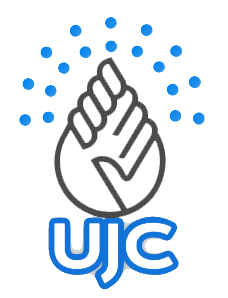Despite remarkable progress in biotechnology and a growing understanding of biological systems, the discovery of new drugs remains a prolonged, complex, and expensive process with high attrition rates. Drug design, also called rational drug design, involves creating molecules that complement the shape and charge of biological targets, enhancing binding specificity and therapeutic potential. Increasingly, computational and bioinformatics tools are integrated to streamline this process, especially for biopharmaceuticals such as therapeutic antibodies.
Principles of Drug Design
Christopher Lipinski’s “Rule of Five” (1997) provides guidelines for evaluating drug-likeness, focusing on molecular properties like size and lipophilicity, which affect absorption, distribution, metabolism, and excretion (ADME). While the rule does not guarantee pharmacological activity, it is invaluable during optimization to enhance activity, selectivity, and desirable physicochemical characteristics.
Types of Drug Design
Ligand-Based Design
This approach utilizes knowledge of molecules that bind a target to develop pharmacophore models, establishing the minimal structural features required for binding. Quantitative structure-activity relationship (QSAR) analyses predict the activity of new analogs based on correlations between molecular properties and observed biological effects.
Structure-Based Design
Relies on three-dimensional structural information of targets obtained via X-ray crystallography or NMR. When direct structures are unavailable, homology models can be constructed. Computational and manual techniques can then be used to design molecules with high affinity and specificity.
Rational Drug Design
Unlike empirical approaches, rational design starts with identifying and validating a biological target whose modulation is anticipated to yield therapeutic benefits. A target must also be “druggable,” capable of binding small molecules that influence its activity. The process continues with the expression of the target and development of assays for screening.
Computer-Aided Drug Design (CADD)
CADD leverages computational chemistry to predict the likelihood and strength of compound-target interactions. Molecular dynamics, quantum chemistry, and knowledge-based scoring functions provide insights into binding affinities and help optimize molecular properties.
Approaches in Drug Design
- Random screening of synthesized or natural compounds using bioassays.
- Deriving novel compounds inspired by bioactive natural products.
- Modifying lead structures to improve activity through bioisosterism.
Objectives of Drug Design:
- Optimize ADME properties.
- Enhance selectivity and potency.
- Reduce toxicity.
- Lower production costs.
- Utilize beneficial side effects of existing drugs.
Prospective DevelopmentsRapid scientific advances are transforming drug discovery. The COVID-19 pandemic highlighted the need to accelerate development timelines, with artificial intelligence (AI) offering powerful tools to analyze massive datasets and identify new drug candidates. The ultimate goal is to design effective, safe, and personalized drugs in record time—a vision becoming increasingly feasible.
Drug Discovery
Drug discovery spans 10–15 years and costs billions of dollars. It involves identifying viable targets, confirming them, discovering and optimizing leads, and conducting preclinical and clinical studies. Despite these investments, success rates remain low, with only about 13% of candidates reaching market approval.
Stages in Drug Discovery and Development:
- Target Identification: Determine disease-related biomolecules as potential therapeutic targets.
- Target Validation: Confirm target relevance through in vitro and in vivo models.
- Reproducibility: Verify experimental findings for target reliability.
- Lead Identification and Optimization: Develop molecules with desired activity, synthetic feasibility, and preliminary efficacy.
- Product Characterization: Assess physical, chemical, and biological properties.
- Formulation Development: Design stable, bioavailable dosage forms.
- Preclinical Testing: Evaluate safety and efficacy in animals, complying with regulatory requirements.
- New Drug Applications (NDA): Submit comprehensive data demonstrating safety, efficacy, labeling proposals, and other required information for regulatory approval.
Factors Influencing Drug Discovery
- Therapeutic Goals: Clear, specific objectives improve discovery success.
- Medicinal Chemists’ Expertise: Critical for designing and refining compounds.
- Screening Facilities: Essential for high-throughput evaluation of candidates.
- Development Facilities: State-of-the-art labs accelerate progress.
- Costs and Nature of Molecules: Influence design, synthesis, and formulation feasibility.
Conclusion
Rational drug design, propelled by advances in molecular biology, structural analysis, and computational tools, has revolutionized how therapeutic compounds are identified and optimized. Structure-based and ligand-based design approaches accelerate discovery, reduce costs, and improve success rates. As global health challenges like COVID-19 persist, innovative strategies are urgently needed to develop effective treatments and vaccines.
References
- Madsen U, Krogsgaard-Larsen P, Liljefors T. Textbook of Drug Design and Discovery. Taylor & Francis, 2002.
- Reynolds CH, Merz KM, Ringe D, eds. Drug Design: Structure- and Ligand-Based Approaches. Cambridge University Press, 2010.
- Fosgerau K, Hoffmann T. Peptide therapeutics: current status and future directions. Drug Discov Today. 2015;20(1):122-128.
- Ciemny M, et al. Protein-peptide docking: opportunities and challenges. Drug Discov Today. 2018;23(8):1530-1537.
- Shirai H, et al. Antibody informatics for drug discovery. Biochim Biophys Acta. 2014;1844(11):2002-2015.
- Additional references continue as per the original document.
